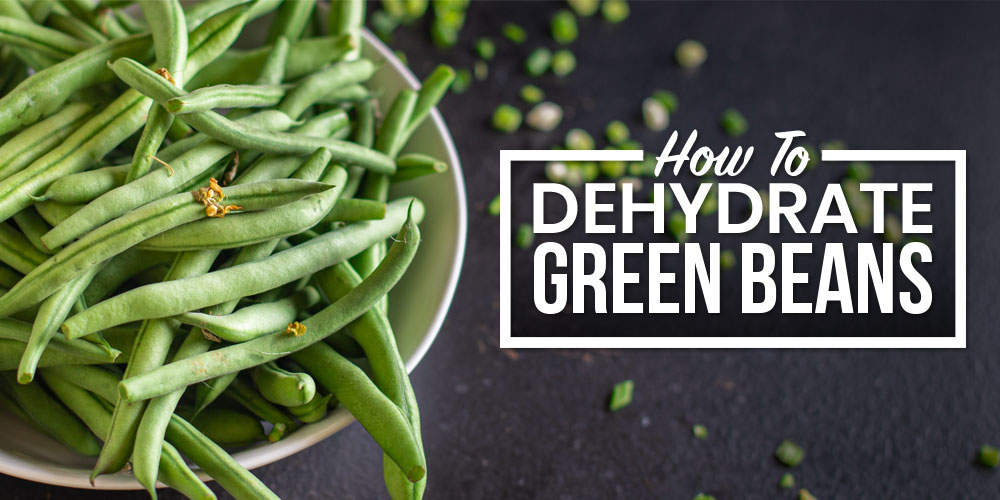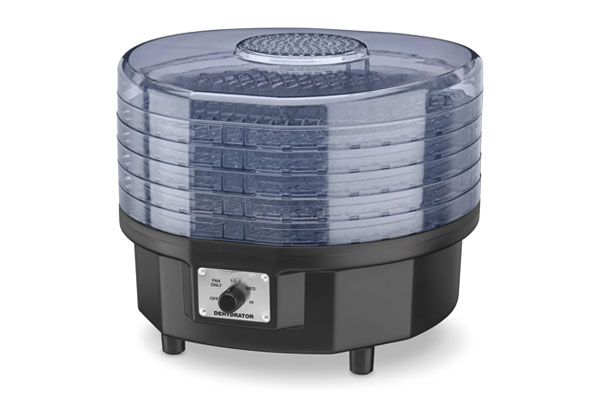To get started with preserving food, learning how to dehydrate green beans is a great way to start. They can also become a tasty addition to any kitchen. I used to not know how to preserve vegetables, but now I know that dehydrating one of my favorites is a useful and cheap way to do it. I feel a sense of accomplishment with the completion of each crunchy new batch of dehydrated green beans.
Give yourself the tools you need for step-by-step dehydrating, and enjoy the satisfaction of making something that will last for years.
I’ve spent a lot of time in my off-grid kitchen, which requires a lot of thoughtful food preservation. Dehydrated green beans are one of my favorite staple snacks and a delicious addition to any meal.
Dehydrating green beans is an easy way to preserve your garden harvest while retaining flavor and nutrition. With just a few simple steps you can enjoy crisp tasty green beans year-round.
Benefits of Drying Green Beans
Dehydrating offers many advantages over other preservation methods
- Maintains more nutrients than canning or freezing
- Intensifies natural flavors as moisture evaporates
- Allows for long-term storage without refrigeration
- Creates lightweight, easy-to-store ingredients
- Enables enjoying garden fresh beans all year
- Allows customizing beans for recipes by rehydrating
Dried green beans are great for snacking, adding to soups and casseroles, and reconstituting into side dishes. Their concentrated flavor makes them ideal for seasoning as well.
Selecting Green Beans for Drying
Choose fresh, tender green beans for dehydrating. Overly mature beans will be tough and fibrous The best beans
- Have smooth, vibrant pods without bulges or lumps
- Snap easily when bent and are crisp
- Are 3-6 inches long depending on variety
- Have small, underdeveloped seeds
- Show no sign of disease, bruising or decay
Pick beans early in the morning when they are coolest and most crisp. Avoid wilted or limp beans. For prime texture and taste, start dehydrating beans the same day they are harvested.
Preparing Green Beans for Drying
Follow these steps to prep green beans for the dehydrator:
- Wash thoroughly under cool running water.
- Snap off stem and tip ends. Leave beans whole.
- Cut longer beans into uniform 2-3 inch pieces if desired.
- Blanch for 3-5 minutes until bright green.
- Shock in ice water bath to stop cooking process.
- Pat dry with clean towels or spin in salad spinner.
Blanching green beans before dehydrating pre-cooks them slightly to accelerate drying time. It also helps retain color and deactivate enzymes that cause loss of flavor and texture during storage.
How to Dehydrate Green Beans
Drying green beans requires only a few steps:
- Arrange beans in a single layer on dehydrator trays.
- Make sure there is adequate airflow around the beans.
- Set temperature between 125°F to 135°F.
- Dry for 6 to 10 hours, checking periodically.
- Beans are done when brittle and shriveled.
Rotate trays and stir beans occasionally to ensure even drying. Lower temperatures preserve more nutrients but lengthen drying time.
Testing Dryness of Green Beans
Green beans are fully dehydrated when they display these characteristics:
- Hard and brittle with no flexibility
- Shrunken and wrinkled with no puffiness
- Dry to the touch inside and out
- No visible moisture inside when cut
- Lightweight and hollow sounding when tapped
The drying time can vary based on bean size, moisture content and the dehydrator used. Keep testing beans until all moisture has evaporated.
Conditioning and Storing Dried Beans
After dehydrating, conditioning helps equalize moisture and prolong shelf life:
- Place beans in an airtight container for 24-48 hours.
- Excess moisture will distribute evenly throughout beans.
- If any dampness develops, dehydrate beans for longer.
Once conditioned, store beans in airtight containers out of light and heat:
- Glass jars, plastic containers or resealable bags work well.
- Store in pantry up to 1 year.
- For longer storage, keep beans in the refrigerator or freezer.
For maximum flavor and nutrition retention, use dried green beans within 1 year. Properly stored, they can last for 2-3 years.
Rehydrating and Using Dehydrated Beans
Dried green beans plump up quickly when soaked or cooked in liquid.
- For soups, casseroles and side dishes, simmer beans in water or broth until tender.
- For snacking, soak in water for 30-60 minutes to rehydrate.
- Adjust soaking time to reach desired texture.
- Use rehydration liquid for a nutrient boost in recipes.
Get creative with reconstituted green beans in fried rice, pasta salads, omelets, salsa and more. Their concentrated flavor is delicious.
Making Green Bean Powder
For an easy seasoning, grind dehydrated beans into a fine powder:
- Use a blender, food processor or coffee grinder.
- Work in small batches to prevent clumping.
- Let beans cool completely before grinding.
- Store powder in airtight bottles or jars.
Sprinkle green bean powder on soups, dips, eggs, roast vegetables and meat for a nutritional boost. The options are endless!
Best Green Bean Varieties for Drying
Recommended green bean varieties for dehydrating include:
- Blue Lake – Prolific producer, stringless and slow to develop seeds
- Contender – Reliable yields, straight 5-6 inch pods
- Kentucky Wonder – Heirloom with excellent flavor, stringless when young
- Provider – Heavy yields, matures quickly, crisp texture
- Roma II – Slender and round, harvests over extended period
No matter which variety you grow, follow proper drying techniques for deliciously crisp, flavorful homemade dried green beans to enjoy all year long.
Troubleshooting Green Bean Drying Problems
Issue: Beans are tough and leathery
- Beans were over-mature with large seeds
- Beans dried at too high temperature
Issue: Beans are moldy
- Beans were not dried long enough
- Excess moisture in storage container
Issue: Beans are shriveled and dry inside
- Beans dried too long at too high heat
- Beans were not conditioned after drying
Issue: Beans have no flavor
- Old or poor quality green beans were used
- Beans dried too long at too high temperature

Do I Need To Shell or De-String Green Beans To Dehydrate Them?
Green beans don’t need to be shelled or destringed before they are dried out because the skin is an important part of the drying process. So keep those beans intact, with the exception of stems. You can toss those straight into your compost bin.
Equipment You’ll Need To Dehydrate Green Beans

Only a few essential items are needed for dehydrating green beans. The dehydrator machine, trays, and a good knife all work together to make sure that your green beans keep their flavor and the process goes smoothly. Using the right tools makes the dehydrating process easier and ensures your green beans are safe to eat.
Here’s what you’ll need
- Dehydrator
- Dehydrator trays
- Knife
- Large pot
- Spoon or ladle
- Fresh green beans
- Cloth for drying

I’m often asked about how to dehydrate food in an off-grid kitchen. It can be easy to use your dehydrator without a traditional power source, but it depends on the type of off-grid kitchen or setup you have. This is true whether you are currently dealing with the challenges of an off-grid kitchen or are just interested in the idea.
At the end of the day, you can find the materials to make this lovely and useful pantry essential whether your kitchen is connected to modern utilities or not.
Dehydrating Green Beans
FAQ
Do you have to blanch green beans before dehydrating?
Do you need to cook beans before dehydrating?
How to dehydrate green beans from the garden?
What can you use dried green beans for?
How do you dry green beans in a dehydrator?
Dry In Single Layers In Your Dehydrator Arrange the blanched and cooled green beans on the dehydrator trays, ensuring adequate space between each segment for proper air circulation with no overlap for efficient drying. Set the dehydrator’s temperature to around 125°F (52°C) and let the beans dry for eight to 12 hours.
Is green tea dehydrating?
One of the side effects of green tea is diuresis, which can cause increased urine production. Therefore, you should analyze the amount of tea per day as you run the risk of dehydrating the body.
How do you rehydrate string green beans?
Keep checking on your beans during the dehydrating process from around 8 hours onward. To rehydrate your green beans, soak them in hot water for an hour or cold water for two hours. If you’re adding the dehydrated string green beans to a casserole, stew, or soup, add a little extra water or stock to the recipe.
How do you know if green beans are done dehydrating?
Set the dehydrator’s temperature to around 125°F (52°C) and let the beans dry for eight to 12 hours. Regularly check for dryness or burning throughout the dehydration process to avoid ruining the batch. How Do You Tell When Your Green Beans Are Done Dehydrating? Trust your touch — your green beans are ready when they feel dry and brittle.
